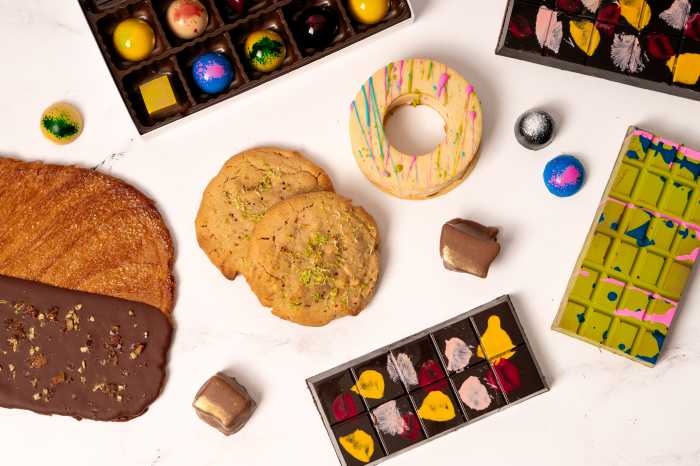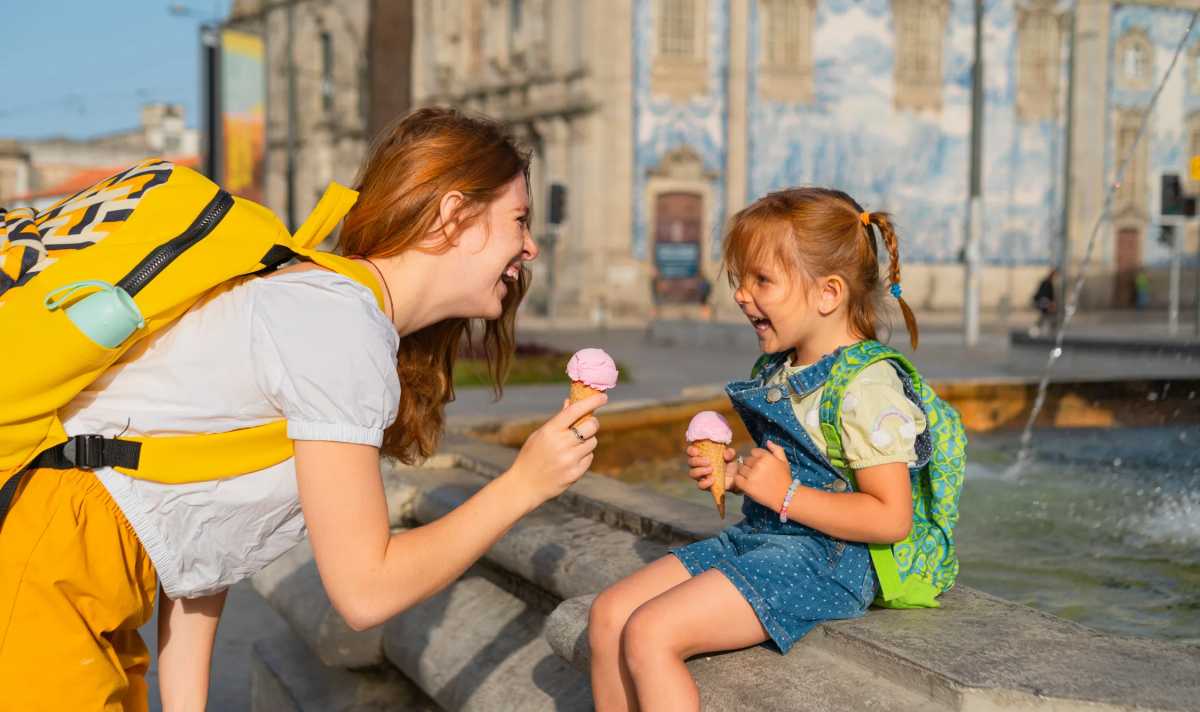-
 Atlantic Grill
Atlantic Grill1341 Third Ave.
Open since 1998, this restaurant offers a variety of sushi rolls and raw-bar options for all the seafood lovers out there.
Uva
1486 Second Ave.
The tapas-style restaurant — open until 2 a.m. — offers Italian pasta dishes, such as veal pappardelle, to be paired with a selection from its international wine list.
Caravaggio Restaurant
23 E. 74th St.
Head here for a lunch with mussels, fettuccine with artichoke and squid and creme brulee with berries for dessert.
” data-id=”111660416″ data-link=”https://amnewyork.wpengine.com/wp-content/uploads/2019/10/8857_image.jpg” class=”wp-image-1.11660416″/>Photo Credit: Linda Rosier -
 Session 73
Session 731359 First Ave.
Head to this live music venue for happy hour or a night out dancing with friends. For those who want to show off their Latin moves, Session 73 offers “Salsa Monday,” with a dance lesson at 7:30 p.m. followed by a live band at 9, plus $2 tacos and $5 margaritas and sangria.
Bar Pleiades
20 E. 76th St.
Backed by celeb chef Daniel Boulud, this lounge features live swing and jazz music on Sundays from 4-7 p.m. and on Fridays from 9 p.m. until midnight.
Bemelmans Bar
35 E. 76th St.
Located on the ground floor of The Carlyle Hotel, the piano bar will give you all the romance Manhattan has to offer — just be prepared to spend more than $20 on a cocktail.
212-744-1600
” data-id=”111660414″ data-link=”https://amnewyork.wpengine.com/wp-content/uploads/2019/10/8858_image.jpg” class=”wp-image-1.11660414″/>Photo Credit: Linda Rosier -
 Gagosian Gallery
Gagosian Gallery980 Madison Ave. and 821 Park Ave.
One of many galleries in the area, this art space specializes in modern and contemporary work and currently features famed artists such as Joe Bradley, Urs Fischer and Rudolf Stingel.
John Jay Park
East 76th to East 78th streets at the FDR Drive
The local spot for basketball and handball. The community space also has a public pool and playgrounds for the kids.
Central Park
East 72nd Street and 79th Street entrances
Local dog lovers and residents seeking respite have the city’s crown jewel of parks as their backyard.
” data-id=”111660413″ data-link=”https://amnewyork.wpengine.com/wp-content/uploads/2019/10/8859_image.jpg” class=”wp-image-1.11660413″/>Photo Credit: Linda Rosier -
 Manioc Cashmere
Manioc Cashmere922 Madison Ave.
Among the numerous high-end designers in this section of the Upper East Side is this Italian cashmere apparel’s New York flagship.
Stubbs & Wootton
987 Madison Ave.
The New York outpost of this Florida-based brand known for its slippers with colorful prints.
La Maison du Chocolat
1018 Madison Ave.
Calling all chocolate lovers: This place is for you. Pralines, chocolate-covered fruits and ganache are only some of the delicious sweets this boutique has to offer.
” data-id=”111660415″ data-link=”https://amnewyork.wpengine.com/wp-content/uploads/2019/10/8860_image.jpg” class=”wp-image-1.11660415″/>Photo Credit: Linda Rosier -
 Trains:
Trains:6 to 77th Street
Buses:
M1, M2, M3, M4, M15, M31, M72, M79, M98, M101, M102, M103, BxM1, BxM3, BxM4, BxM11
” data-id=”111660419″ data-link=”https://amnewyork.wpengine.com/wp-content/uploads/2019/10/8861_image.jpg” class=”wp-image-1.11660419″/>Photo Credit: Linda Rosier -
 Median recorded sales price: $1,145,000
Median recorded sales price: $1,145,000
Number of sales units on the market: 229
Median rent price: $3,350
Number of rentals on the market: 263
(Source: StreetEasy)
” data-id=”111660418″ data-link=”https://amnewyork.wpengine.com/wp-content/uploads/2019/10/8862_image.jpg” class=”wp-image-1.11660418″/>
Photo Credit: Linda Rosier
The Upper East Side between 70th and 79th streets represents New York’s glamorous side.
Long considered a place to park old money and shop in glitzy boutiques along Madison and Park avenues, even the words Upper East Side have a connotation of wealth.
Currently change is afoot, from new developments like the Charles, 31 stories of luxury condos at 1355 First Ave. between East 72nd and 73rd streets, to the ongoing construction of the Second Avenue subway line.
The $4.5 billion first phase of the project, which will include a new train station at East 72nd Street, is slated for completion in December, according to the MTA.
After decades of downtown Manhattan being the trendy place to be, “with the Second Avenue subway coming in, everyone wants to come back uptown,” said Jessica Kaufman, a 13-year resident of the East 70th streets and a real estate broker for Citi Habitats.
Despite the glitz and glam of the area, its real estate is less expensive than one might expect, according to Alan Lightfeldt, a data scientist with the listings site StreetEasy.
“The Upper East Side has more to offer than multi-million dollar brownstones,” Lightfeldt said. “The neighborhood has a consistently high volume of co-op units priced below $1 million, making it an affordable option for a wide variety of buyers.”
The median sales price between East 70th and 79th streets in 2015 was $1,145,000 — compared to $1,175,000 for all of Manhattan — according to StreetEasy.
On the rental side, the median monthly price last year was $3,350, compared to $3,250 in Manhattan as a whole, StreetEasy found. Rents tend to be cheaper closer to the East River, Lightfeldt noted, but that’s expected to change once the new subway line opens.
Locals and tourists alike come to the neighborhood for its shops. Often referred to as the “Gold Coast of shopping,” Madison Avenue between East 70th and 79th streets is home to boutiques from some of the world’s most luxurious designers, including Tom Ford, Missoni, Ralph Lauren and Carolina Herrera.
There’s plenty to do here besides shop, however. It is home to a plethora of art spaces, including the Rosenfeld Gallery at 16 E. 79th St., the Gagosian’s galleries at 980 Madison Ave. and 821 Park Ave., and the world-famous Frick at 1 E. 70th St.
For added culture, head to literary events held by the New York Society Library at 53 E. 79th St. or check out an exhibit at the Asia Society Museum at 725 Park Ave.
“Living in the neighborhood is like living in a resort,” said Councilman Ben Kallos, who represents the area. “You’ve got everything you’re looking for without having to leave the neighborhood: great food, great entertainment and great shopping.”
And of course, Upper East Side could not be described without its parks.
Along the East River from 76th to 78th streets is John Jay Park, which features handball and basketball courts and a public pool.
But the crown jewel for the Upper East Side, and the borough as a whole, is Central Park. With its 26,000 trees across 843 acres, the park is the ultimate escape from Manhattan’s hectic streets. The numerous monuments, ponds and fountains that are accessible from its East 72nd and 79th street entrances are only some of the wonders the sprawling greenspace has to offer.
“I use it all year round,” said Sheila Walpin, a resident of the area for 25 years, who heads to Central Park about four to five times a week.
Graham Fowler is there even more.
“I’m there every day, twice a day walking these two,” said the resident of East 75th Street and Madison, referring to his Brussels Griffons puppies.
Fowler moved from London in 1999 and settled in the area because of its easy access to the Central Park. He said he loves the “greenery in the [park], which you don’t find downtown.”
Find it:
This section of the Upper East Side goes from East 70th to East 79th streets between Fifth Avenue and the East River.




































